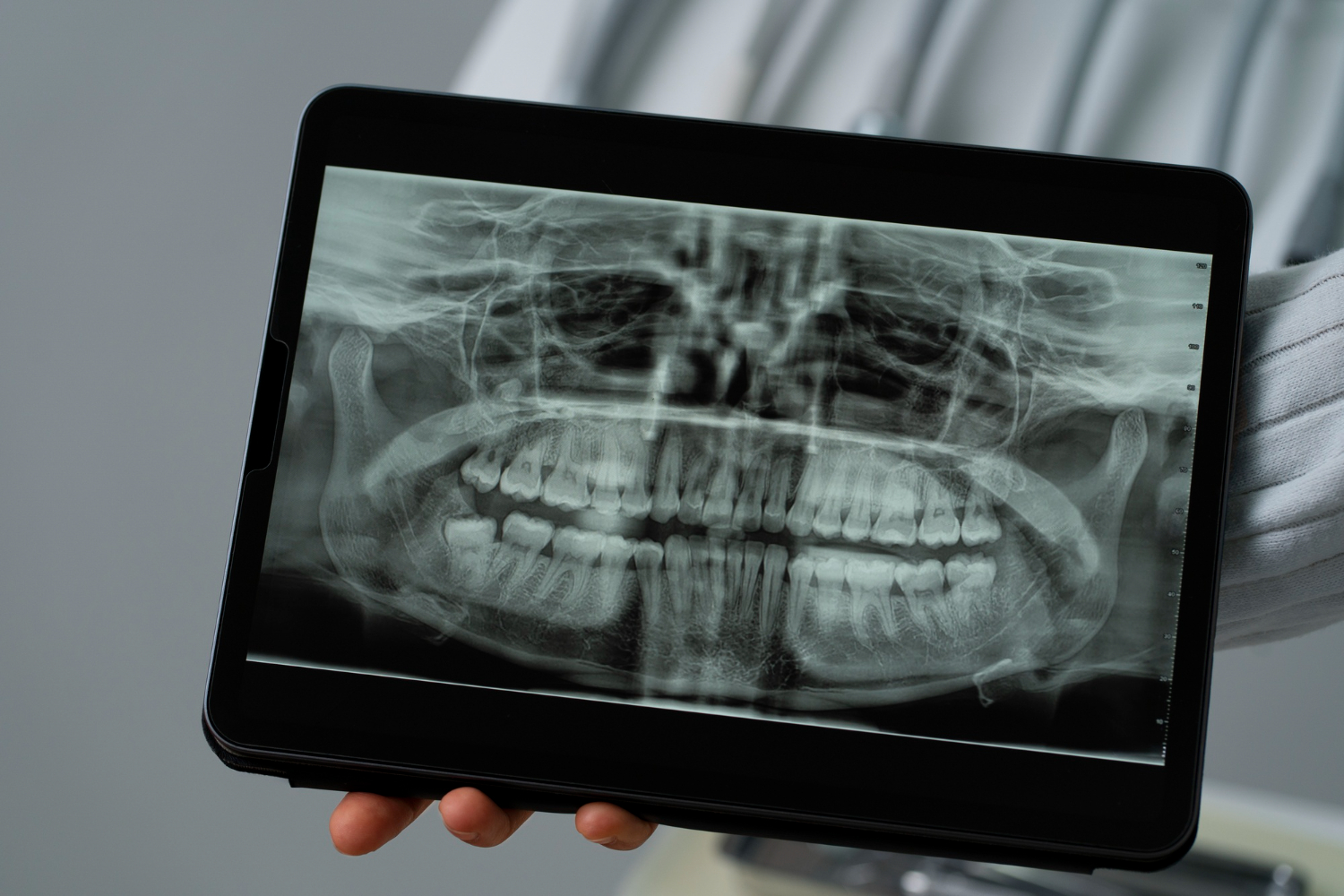In digital volume tomography, a special X-ray machine rotates once around your head and creates individual images of your mouth and jaw from different angles. These are then combined and assembled into a precise 3D model.
This procedure enables us to:
- determine the exact position of teeth and their location in the jaw,
- analyse the course of nerves and blood vessels,
- detect changes such as cysts, inflammation or bone defects,
- plan the optimal position for implants.
Good to know: We will discuss with you in advance whether a DVT makes sense in your case and advise you in detail.

